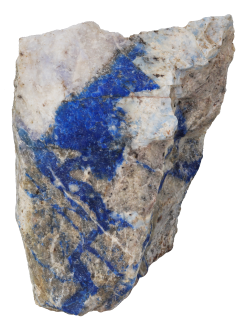open 10 am - 7 pm
laboratory is closed
Lazurite

Lazurite is a mineral species, class of silicates, a subclass of tectosilicates (frame silicates), feldspatoidae family, sodalite groups. Its color is characterized by a basic blue color with hues ranging from violet to green.
The name "lazurite" comes from the Persian name of this stone - "دلاژر" (lajjvar). As a jewelery-ornamental stone, lapis lazuli has been known since antiquity, its products are found in the tombs of Egypt and Mesopotamia, mention of it can be found in Aristotle and Theophrastus.
A detailed description of it as “lapide-lazulli” is given in 1609 in his work “Gemmarum et lapidum historia” by Boethis de Boodt (Anselmus Boëtius de Boodt, 1550-1632).
The name “Lazurite” (lapis lazuli) jewelry stone was applied to the mineral as a mineral species in 1868 by James Dan (James Dwight Dana, 1813-1895) in the work “System of Mineralogy, 1868” (first edition in 1837 ). The term “lapis lazuli” was first used in an article by Waldemar Breugger (Waldemar Christofer Brøgger; 1851–1940) and Helge Beckström (Helge Mattias Bäckström, 1865–1932) “Die mineralien der Granatgruppe”, published in the Journal of Crystallography and Mineralogy (Zeitschristum, 17). Krystallographie und Mineralogie) in 1891.
Nowadays, the term “lapis lazuli” together with the term “lapis lazuli” is often used in trade practice for the name of a lapis lazuli-containing rock, used as a jewelry-ornamental and ornamental stone.
Chemistry: Na6Ca2(Al6Si6O24)(SO4,S,S2,S3,Cl,OH)2, idealized formula - Na3Ca[(Si3Al3)O12]S;
Crystal system: Cubic, hexoctahedral symmetry class (point group);
In addition, there are less common triclinic and monoclinic polymorphic modifications. In the mineralogical literature there are references to the rhombic polytype, which later was recognized as a new mineral species - Vladimiroivanovite;
Color: The color of lapis lazuli due to radical ions S42-, SO4- and S3-.
Traditionally, for lapis lazuli, several varieties were identified from Gorny Badakhshan fields due to color shades: dense blue — nili variety, indigo-blue — asmani and greenish-blue — sufsi (sebsi) varieties.
Identification properties
| Physical properties | |
|---|---|
| Mohs hardness: | 5 – 5,5 |
| Density: | 2,38 – 2,48 g/cm3 |
| Cleavage: | imperfect |
| Fracture: | uneven, shell |
| Optical properties (for cubic polymorphic modification) | |
|---|---|
| Optical character: | isotropic, anomalous anisotropy |
| Refractive Index: | 1,498 – 1,522 |
| Birefringence: | absent, anomalous - weak |
| Pleochroism: | weak (yellowish green - green) |
| Dispertion: | 0,018 (BG), missing |
| Luster: | glass to greasy |
Inclusions and structural inhomogeneities
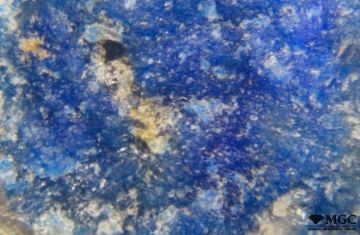

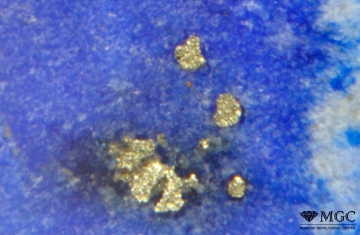
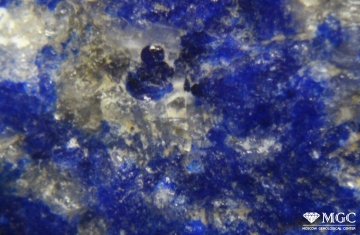
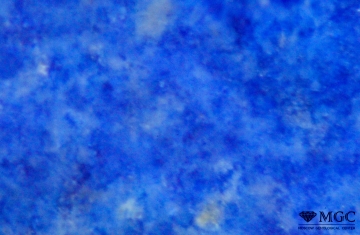
Gem basic treatments
| Treatment | Goal |
|---|---|
| Heat treatment | Changing the color or improving the visual perception of color characteristics |
| Blue dyeing | Changing the color or improving the visual perception of color characteristics |
Synthetic or Imitation gem materials
Synthetic lapis lazuli for the jewelry industry is not made. However, imitations, including artificial ones, are widespread.
As imitations of lazurite are used as follows:
- natural minerals with a similar color (irnimite, azurite);
- natural minerals dyed with blue dyes;
- artificial materials: glasses, pastes, composites.


